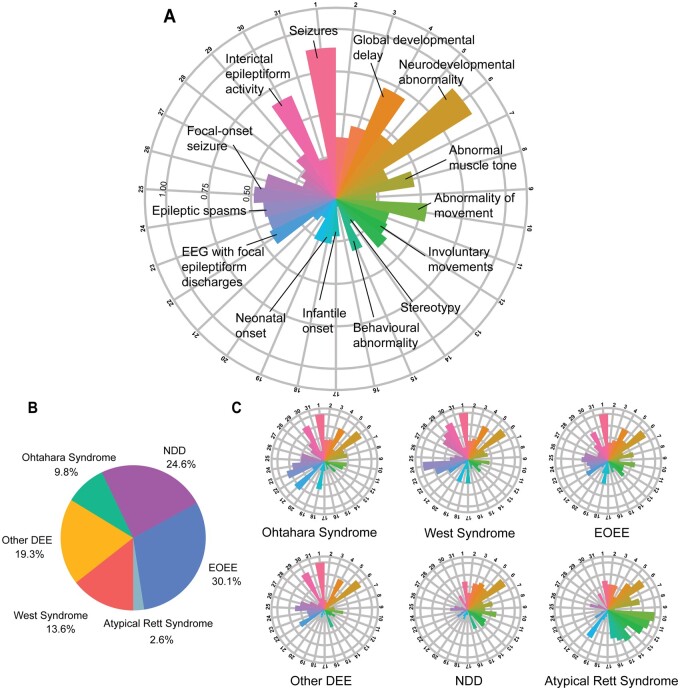Figure 2.
Individuals reported with STXBP1-related disorders and associated phenotypic features across subgroups. (A) Distribution of phenotypic features in the overall cohort of 534 individuals. Radial lines indicate frequency of terms in the respective cohort. 1: seizures; 2: abnormality of higher mental function; 3: delayed speech and language development; 4: global developmental delay; 5: Intellectual disability; 6: Neurodevelopmental abnormality; 7: Neurological speech impairment; 8: Abnormal muscle tone; 9: Abnormality of coordination; 10: Abnormality of movement; 11: gait disturbance; 12: involuntary movements; 13: muscular hypotonia; 14: stereotypy; 15: behavioural abnormality; 16: bruxism; 17: infantile onset; 18: neonatal onset; 19: paediatric onset; 20: sleep disturbance; 21: EEG with burst suppression; 22: EEG with focal epileptiform discharges; 23: EEG with generalized epileptiform discharges; 24: epileptic spasms; 25: focal-onset seizure; 26: generalized-onset seizure; 27: generalized tonic–clonic seizures; 28: hypsarrhythmia; 29: infantile spasms; 30: interictal epileptiform activity; and 31: multifocal epileptiform discharges. (B) Individuals were grouped into broad phenotypic groups: EOEE (n = 163), neurodevelopmental disorders (NDD, n = 129), developmental and epileptic encephalopathy not otherwise specified (other DEE, n = 103), West syndrome (n = 77), Ohtahara syndrome (n = 49) and atypical Rett syndrome (n = 13). (C) Distribution of phenotypic features across subgroups.

